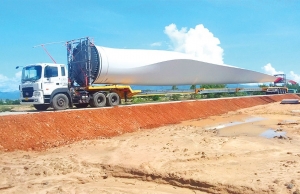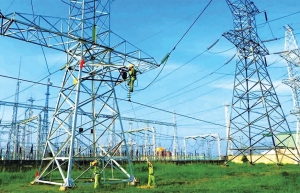Effective mechanisms will ensure an efficient PDP8
The plan estimates a total investment capital of approximately $134.7 billion for the development of power projects towards 2030. Of this, $119.8 billion is allocated for power generations and $14.9 billion for the transmission grid.
 |
| Thanh Hai Nguyen - Partner, Energy and Infrastructure Baker McKenzie Vietnam |
Considering such a high demand for investment capital, Vietnam needs to formulate and secure appropriate regulatory solutions to draw sufficient investment capital in the power industry and strengthen its sources for the development of the energy market.
There are certain challenges to be addressed in terms of grid capacity and financing arrangements. Given the large investment capital needs for implementing the PDP8, especially those from private sector capital, the plan’s approval has suggested 11 groups of key measures for implementation. Among other measures, the enhancement of the legal and policy framework is an important part.
While Vietnam has done reasonably well in recent years in terms of attracting foreign direct investments in the energy sector, a key issue in the coming years to ensure effective and long-term PDP8 implementation is how to enhance the current regulatory framework to address the current gap for a comprehensive legal framework that can draw private investment and financing in power infrastructure development.
To achieve the targets set out under the PDP8, the key legal instruments to be formulated and promulgated in the upcoming period include: amending the electricity law, a new law on renewable energy, a comprehensive legal framework for the direct power purchase agreement mechanism, and a competitive and transparent mechanism for investor selection of power projects.
The new regulations will need to implement the policy set out in the PDP8 regarding investment capital, including in: finalising financial and capital mobilisation mechanisms; diversifying capital sources; effective use of international support commitments; effective credit policies; diversifying investment forms to enhance competition and improve efficiency; and effectively using funding sources and capital arrangement support towards net-zero emissions.
They will also need to cover increasing the financial mobilisation capacity of enterprises in accordance with domestic and international financial institutions; luring domestic and international private investment; and creating a favourable, transparent, and attractive environment for the private sector.
For the next step, the detailed implementation plan for PDP8 and relevant mechanisms need to elaborate on these general policies, especially those concerning the promotion of financial and capital mobilisation for attracting domestic and foreign investment in the power industry.
It is critical for the power market in Vietnam to ensure that the grid will be able to sustain a material increase in power generation, and this is where Vietnam will have to be creative to draw private investment.
Although the amended Law on Electricity in 2022 opened investments in power transmission projects to the private sector, the government has yet to issue sufficient implementing regulations which would allow it to become reality, noting further that power transmission is still included in the list of commercial goods and services, which fall under state monopoly.
The next step in promoting private investment in power transmission projects is for the relevant government agencies to develop a clear regulatory framework for the private sector to invest in the grid by supplementing existing regulations and/or issuing new ones. A key question will be the investment model in the grid and whether it will still be supported or sponsored by Electricity of Vietnam or if the market is ready for purely private investments in certain transmission projects.
An attractive investment environment must ensure legal, technical and financial feasibilities; competition and transparency in selection of investors to ensure investors have enough experience and financial capacity to develop their projects; commercial certainty and predictability to ensure the viability and sustainability of power projects; and a clear scope for private investment in the grid with reasonable revenue models.
An area of enhancement can be on the contractual and risk management frameworks, enhancing the predictability of commercial projections and funding in Vietnam.
 | Localities pinning hopes on PDP8 to help beat the heat With clear evidence that Vietnam’s electricity structure is creaking under the current heat and grid overload, the Power Development Plan VIII contains the acute task of successfully implementing an equitable energy transition in association with smart grid construction and advanced power system management in line with a greener outlook. |
 | HCMC proposes 6,000MW Can Gio offshore wind power plant in PDP8 Ho Chi Minh City Department of Industry and Trade has put forth a proposal to incorporate the Can Gio offshore wind power plant, boasting a capacity of 6,000MW, into the forthcoming Power Development Plan VIII (PDP8). |
 | From aspiration to reality for PDP8 Weeks after the Vietnamese prime minister approved the national power development plan for 2021-2030 (PDP8), Hanoi and other major northern cities of Vietnam experienced serious electricity supply crunch. The PDP8, which will shape the country’s power development in the next decade, would be a good start to find a solution. Ngoc Nguyen, counsel at Hogan Lovells International LLP, explores the aspirational development goals set by the government and how to resolve the situation. |
What the stars mean:
★ Poor ★ ★ Promising ★★★ Good ★★★★ Very good ★★★★★ Exceptional
Related Contents
Latest News
More News
- Vietnam’s forest carbon credits draw global interest (December 05, 2025 | 17:41)
- Coro Energy to launch BESS Pilot in Vietnam (December 04, 2025 | 15:12)
- Vietnam strengthens energy storage pathway (December 04, 2025 | 15:05)
- Women take leading role in agriculture and food systems (December 03, 2025 | 19:04)
- Experts highlight unpaid care work as key barrier to gender equality (December 03, 2025 | 15:15)
- Vietnam sets pace for dual transition in industry and trade (December 03, 2025 | 14:12)
- Harnessing technology for a sustainable future in Vietnam (December 03, 2025 | 12:17)
- Sustainability efforts on right track through policy and tech (December 03, 2025 | 12:05)
- Hanoi symposium highlights gender equality research and policy (December 03, 2025 | 12:00)
- The march to productivity and environmental sustainability (December 03, 2025 | 09:17)

 Tag:
Tag:






















 Mobile Version
Mobile Version